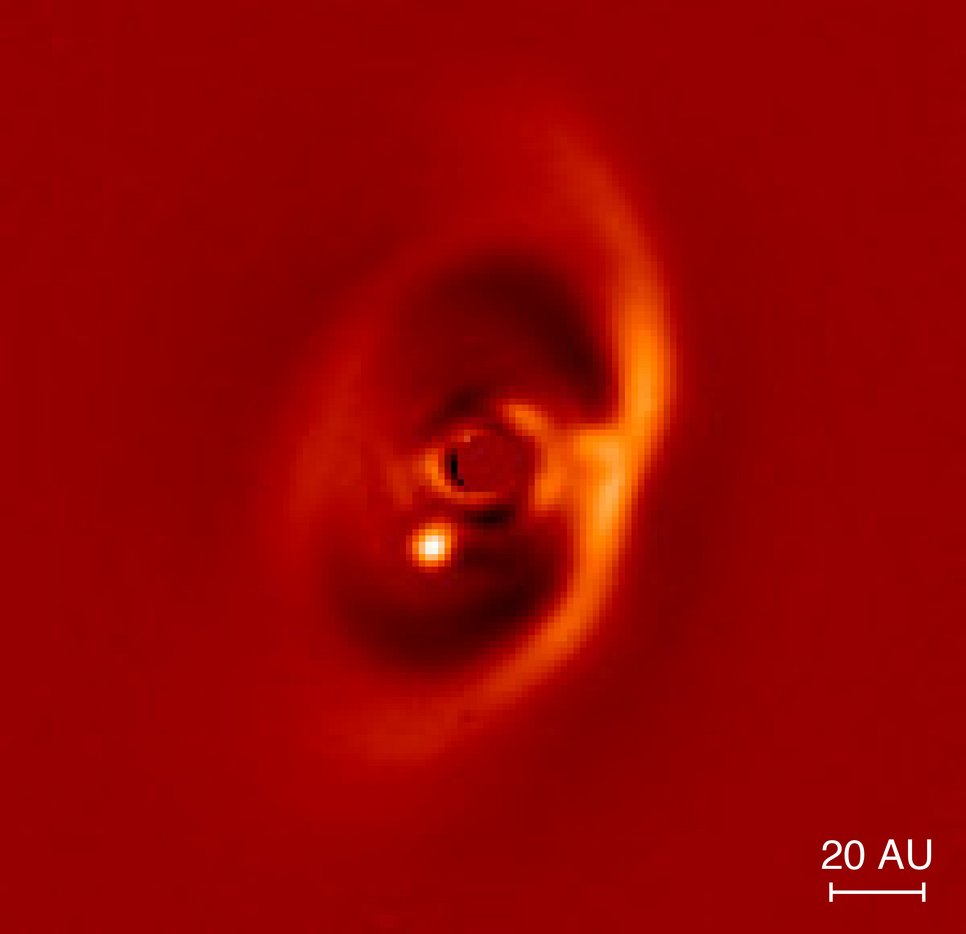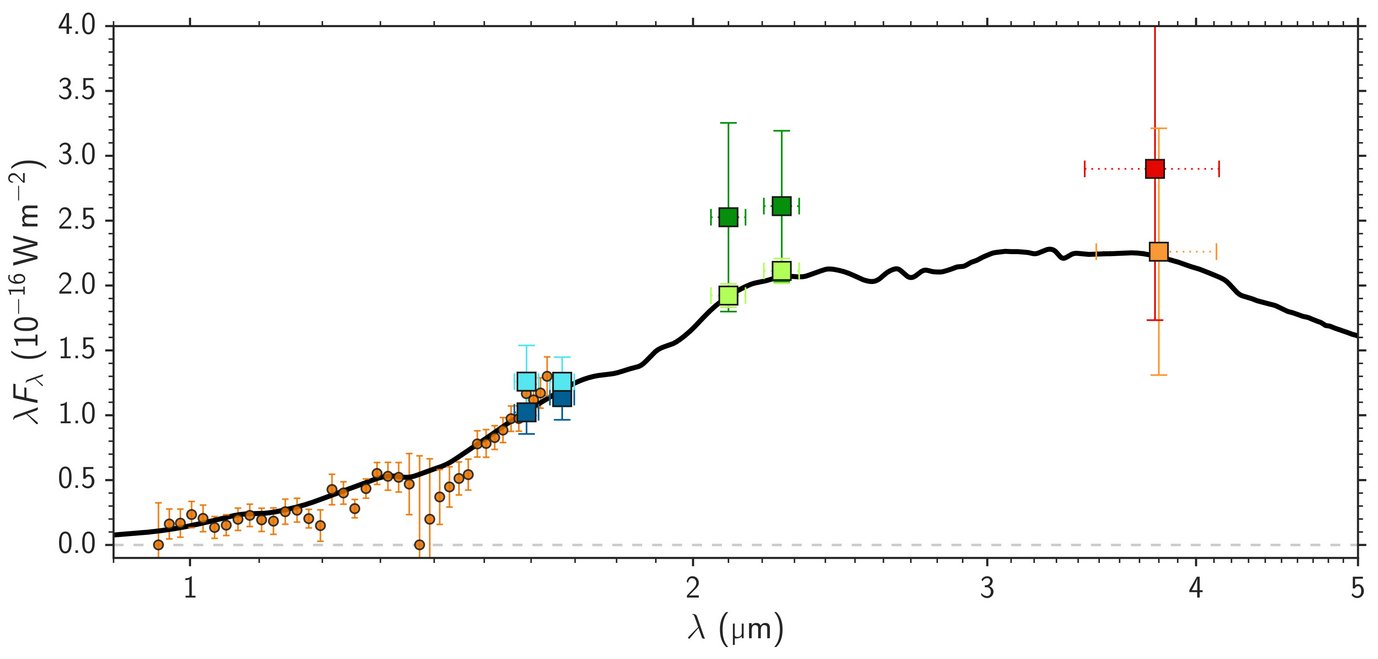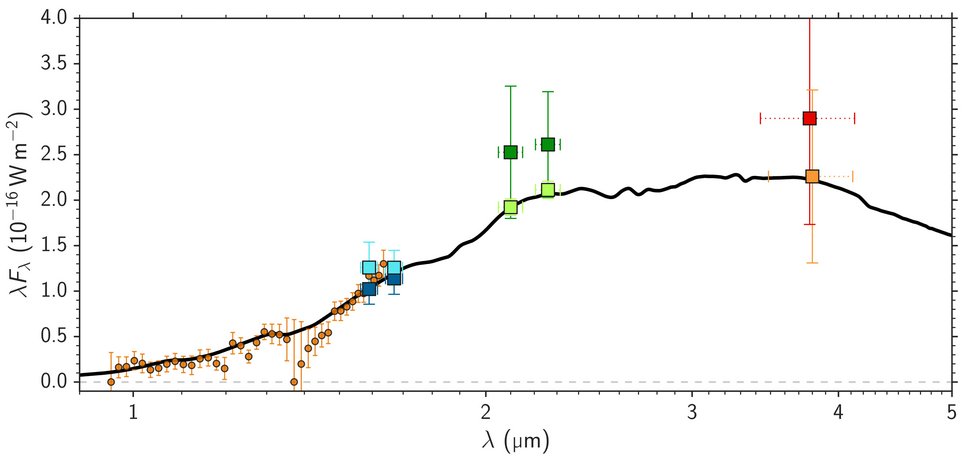Astronomers Witness the Birth of a Planet
| Background information | Download area |

The search for exoplanets has so far revealed some 3800 specimens of various sizes, masses and distances from their parent stars. However, we do not know exactly how these planets form. While there are various theories and models for planet formation, actually observing the birth of a planet has proven very difficult.
But this is exactly what astronomers of the Max Planck Institute for Astronomy (MPIA) in Heidelberg and the consortium of the SPHERE instrument at the Very Large Telescope of the European Southern Observatory (ESO) have now achieved: The planet PDS 70 b was discovered at a distance of 22 astronomical units (au) from its host star PDS 70. 1 au is the mean distance between the Sun and the Earth. “For our study, we selected PDS 70, a star that was already suspected of having a young planet circling around it,” says Miriam Keppler, doctoral student at the MPIA and first author of the publication that highlights the discovery.
Disk around a young star
PDS 70, a 5.4 million year old so-called T Tauri star, is surrounded by a circumstellar disk of gas and dust that is 130 au wide. For comparison: the outer edge of the solar system, the Kuiper Belt, extends only up to about 50 au. Such disks consist of matter left over from the host star's formation. The circumstellar disk around PDS 70 exhibits a large gap. Such gaps are thought to be signs of ongoing planet formation, caused by a young giant planet collecting disk material on its orbit. By interacting with the disk, the planet slowly changes its distance to the central star. Over time, it cuts a broad circular swathe through the gas and dust.
In a subsequent investigation led by André Müller, the group of astronomers was able to obtain a spectacular image of the PDS 70 system, in which the planet is clearly visible at the inner rim of the gap of the disk. The planet takes about 120 years to orbit its host star. A spectrum of PDS 70 b allowed the astronomers to determine the planet's atmospheric and physical properties. “This discovery provides us with an unprecedented opportunity to test theoretical models of planet formation,” Dr Müller explains with enthusiasm.
A young, giant planet
The analysis shows PDS 70 b to be a giant gas planet, with a mass a few times that of Jupiter. The planet's surface has a temperature of around 1200 Kelvin, making it much hotter than any planet in our own solar system. The planet must be younger than its host star, and is probably still growing. The data also indicate that the planet is surrounded by clouds that alter the radiation emitted by the planetary core and its atmosphere. “We corrected our calculations to take into account the new data published by the Gaia satellite for stellar distances. According to Gaia, PDS 70 is at a distance of 370 light years,” Ms Keppler explains. PDS 70 b confirms the prediction that gas planets like Jupiter should indeed form at large distances from the host star.
The scientists need to apply sophisticated observational and analytical techniques to obtain an image of a protoplanetary disk. On conventional images, all objects in the vicinity of the host star will be lost in the glare of the bright starlight. However, with the SPHERE instrument the contribution of the star can be eliminated. To do this, the camera makes use of a property of light known as polarisation. Linearly polarised light waves oscillate in only one plane. The light of a star, on the other hand, is predominantly non-polarised. In contrast, light reflected by the disk will become linearly polarised when scattered by the disk's dust particles.
With a suitable polarisation filter, which transmits light waves in only one plane of oscillation, the light coming from different areas of the disk is either detected or cancelled out, depending on the filter's orientation. Incidentally, photographers use a similar effect to suppress reflections from a smooth surface.
The starlight, on the other hand, will be observed regardless of the orientation of the filter. By exploiting this difference between direct starlight and light reflected by the disk, astronomers can remove the direct starlight. In support of their measurements, the observers also cover the star with a mask. What remains is an image of the disk.
“After ten years of developing new powerful astronomical instruments such as SPHERE, this discovery shows us that we are finally able to find and study planets at the time of their formation. That is the fulfilment of a long-cherished dream,” concludes Prof. Thomas Henning, director at MPIA, senior author of the two studies and the German co-I of the SPHERE instrument.

Background information
The results described here will appear as Keppler et al., "Discovery of a substellar companion within the gap of the transition disk around PDS 70" and as Müller et al., "Orbital and atmospheric characterization of the planet within the gap of the PDS 70 transition disk", both published in the journal Astronomy & Astrophysics.
The MPIA researchers involved are Miriam Keppler, André Müller, Thomas Henning, Roy van Boekel, Faustine Cantalloube, Anne-Lise Maire, Adriana Pohl, Matthias Samland, Henning Avenhaus in collaboration with Myriam Benisty, Gaël Chauvin (Univ. Grenoble Alpes, CNRS and Unidad Mixta Internacional Franco-Chilena de Astronomía), Anthony Boccaletti (LESIA, Observatoire de Paris), Silvano Desidera (INAF - Osservatorio Astronomico di Padova), Christian Ginski, Rob van Holstein (Leiden Observatory).
SPHERE was built by an international consortium led by MPIA and the Institut de Planétologie et d’Astrophysique de Grenoble (IPAG).
Additional figures and download

Figure 1

Figure 2
Publications
M. Keppler, M. Benisty, A. Müller, Th, Henning, et al., "Discovery of a planetary-mass companion within the gap of the transition disk around PDS 70", Astronomy & Astrophysics, in press
A. Müller, M. Keppler, Th. Henning, et al., "Orbital and atmospheric characterization of the planet within the gap of the PDS 70 transition disk", Astronomy & Astrophysics, in press



